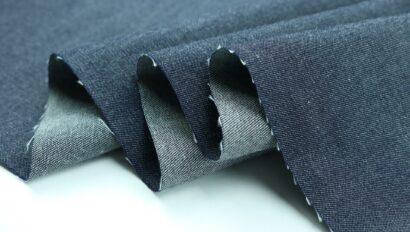Textile Exchange’s annual Materials Market Report shows further growth in the overall production of new materials, including fossil-based synthetic fibers
Textile Exchange has released the 10th edition of its annual Materials Market Report – the leading source for global fiber and materials production volumes for the last decade – and launched its new Materials Directory.
As COP28 conversations begin this week, the report helps inform the textile industry’s efforts to reduce emissions associated with raw material production in line with a 1.5-degree temperature rise pathway.
The data – which includes materials produced for the fashion, textile, and apparel industry as well as for other industries – shows that global fiber production increased from around 112 million tonnes in 2021 to a record 116 million tonnes in 2022. This is expected to grow to 147 million tonnes in 2030 if business continues as usual.
The percentage of natural fibers produced via programs with sustainability elements slightly increased in 2022, including cotton (25% in 2021 to 27% in 2022) and wool (3% in 2021 to 4.3% in 2022). However, the production of virgin fossil-based synthetic fibers also rose from 63 million tonnes to 67 million tonnes. Polyester continues to be the most widely produced fiber globally, making up 54% of production in 2022.
After years of growth, the combined share of all recycled fibers slightly decreased from around 8.5% in 2021 to 7.9% in 2022. This was mainly due to a decrease in the market share of recycled polyester – 99% of which was made from plastic bottles – from 15% in 2021 down to 14% in 2022. Reasons for this decrease include the growing competition for PET bottles as feedstock along with the systematic challenges in scaling textile-to-textile recycling. Less than 1% of the global fiber market came from pre- and post-consumer recycled textiles in 2022.
The findings illustrate a need to speed up the overall shift to fibers from preferred sources, to “double down” on efforts to rapidly reduce the use of virgin fossil-based materials, and to invest in strategies that decouple value creation from the extraction of new materials overall.
Alongside the Materials Market Report, Textile Exchange has also launched its Materials Directory – a unique filterable online repository for raw material suppliers, production units, and branded materials used in the fashion, textile, and apparel industry.
The Materials Directory helps the industry find raw material suppliers, see where they operate, and understand what branded materials they offer in the form of interactive maps and a filterable database.
“The Materials Market Report gives a snapshot of global raw material production, taking stock of where we stand as an industry today. As global leaders come together at COP28, this report only reinforces the urgent need to double down on our collective efforts to accelerate the adoption of production practices that support our planet, its ecosystems, and its communities while focusing internal investment on strategies that decouple value creation from the extraction of new materials overall.”
Claire Bergkamp, CEO at Textile Exchange
Key takeaways from the Materials Market Report 2023 data:
- Global fiber production per person has increased from 8.3 kilograms in 1975 to 14.6 kilograms per person in 2022.
- Polyester production volumes increased from 61 million tonnes in 2021 to 63 million tonnes in 2022. Polyester continues to be the most widely produced fiber, making up 54% of the global market in 2022.
- Cotton from the programs recognized by the 2025 Sustainable Cotton Challenge returned to 27% of total cotton production in 2021/22, after declining to 25% in 2020/21 due to a variety of factors, including weather variations, changes to the Better Cotton program, market conditions, and socio-political challenges.
- Wool produced according to the Responsible Wool Standard (RWS), ZQ, SustainaWOOL (GREEN and GOLD), and Climate Beneficial™ increased from around 3% in 2021 to 4.3% in 2022. This was as high as 74% in the Falkland Islands, 53% in South Africa, 35% in Uruguay, and 21% in Argentina.
- Manmade cellulosic fibers certified by FSC- and/or PEFC had an estimated market share of about 60-65% of all MMCFs in 2022.
- Recycled textiles’ market share slightly decreased from around 8.5% in 2021 to 7.9% in 2022. Pre- and post-consumer recycled textiles accounted for less than 1% of the total global fiber market in 2022.
For press inquiries contact: communications@textileexchange.org
Notes for editors:
About Textile Exchange
Textile Exchange is a global non-profit driving beneficial impact on climate and nature across the fashion, textile, and apparel industry. It guides a growing community of brands, manufacturers, and farmers towards more purposeful production right from the start of the supply chain.
Its goal is to help the industry achieve a 45% reduction in the emissions that come from producing fibers and raw materials by 2030. To get there, it is keeping its focus holistic and interconnected, accelerating the adoption of practices that improve the state of our water, soil health, and biodiversity too.
For real change to happen, everyone needs a clear path to beneficial impact. That’s why Textile Exchange believes that approachable, step-by-step instruction paired with collective action can change the system to make preferred materials and fibers an accessible default, mobilizing leaders through attainable strategies, proven solutions, and a driven community. At Textile Exchange, materials matter. To learn more, visit textileexchange.org.


